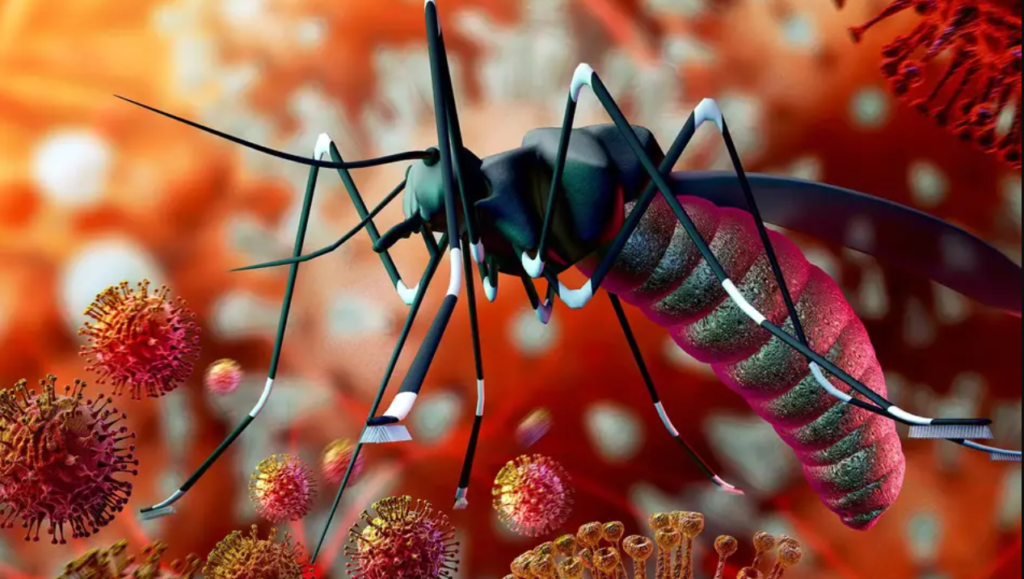Researchers Develop New Approach in the Fight Against Drug Resistance in Malaria
- Uncategorized
- No Comment
- 181

A research team at FAU has developed drugs for treating malaria.
Malaria remains one of the deadliest infectious diseases globally. The emergence of drug-resistant malaria parasites necessitates the continual development of new medications.
A team of researchers at Friedrich-Alexander-Universität Erlangen-Nürnberg (FAU) led by Prof. Dr. Svetlana B. Tsogoeva has now combined the anti-malaria drug artemisinin with coumarin, which, like artemisinin, is also found in plants, and developed an auto-fluorescent compound from both bioactive substances.
This autofluorescence is particularly advantageous as it can be used for imaging in live cells and shows how the medication works in a precise time sequence. The working group also discovered that the autofluorescent artemisinin-coumarin hybrids are able to destroy a certain drug-resistant malaria pathogen called plasmodium palcifarum. They have published their findings in the journal Chemical Science.
Artemisinin is a highly-effective and common ingredient for the manufacture of malaria medication gained from a plant called sweet wormwood (Artemisia annua L.). Coumarin is a secondary plant compound found in various plants.
In the development of drugs against malaria, active substances are labeled with fluorescent substances in order to identify how they act against malaria pathogens in precise chronological order using imaging techniques. This fluorescent labeling has already been used with artemisinin.
Combining substances to achieve autofluorescence
A significant disadvantage of labeling with fluorescent substances is the fact that they alter how the medication works. For example, this means that in certain circumstances cells infected with malaria absorb a drug like artemisinin differently after fluorescent marking than previously.
The solubility of the drug can also change. This was avoided by the development of autofluorescent hybrids, which are compounds made of two or more basic compounds that are inherently fluorescent and whose mode of action can be precisely observed using imaging techniques.
Active agent with special skills
The team led by Prof. Tsogoeva at the Chair of Organic Chemistry decided to combine artemisinin with bioactive coumarins because coumarin derivatives also possess anti-malaria properties. They can also be easily chemically altered so that they become extremely fluorescent.
The researchers discovered that it was not only possible to observe the mode of action of this first autofluorescent artemisinin-coumarin hybrid in living red blood cells infected with P. falciparum.
In conjunction with Prof. Barbara Kappes (Department of Chemical and Biological Engineering, FAU) and Dr. Diogo R. M. Moreira (Instituto Gonçalo Moniz, Fiocruz Bahia, Brazil), they also discovered that the active agent was highly effective against P. falciparum strains in vitro (in a test tube) that are resistant to chloroquin and other malaria drugs. Above all, however, the new compound also proved highly effective against the malaria pathogens in vivo in mouse models.
With the creation of the first autofluorescent artemisinin-coumarin hybrid, the FAU researchers hope that they have laid the foundation for the development of further autofluorescent agents for treating malaria and have made significant process in overcoming multi-drug resistance in the treatment of malaria.
Reference: “Autofluorescent antimalarials by hybridization of artemisinin and coumarin: in vitro/in vivo studies and live-cell imaging” by Lars Herrmann, Maria Leidenberger, Adrielle Sacramento de Morais, Christina Mai, Aysun Çapci, Mariana da Cruz Borges Silva, Fabian Plass, Axel Kahnt, Diogo R. M. Moreira, Barbara Kappes and Svetlana B. Tsogoeva, 24 October 2023, Chemical Science.
DOI: 10.1039/D3SC03661H
By FRIEDRICH-ALEXANDER-UNIVERSITÄT ERLANGEN-NÜRNBERG





